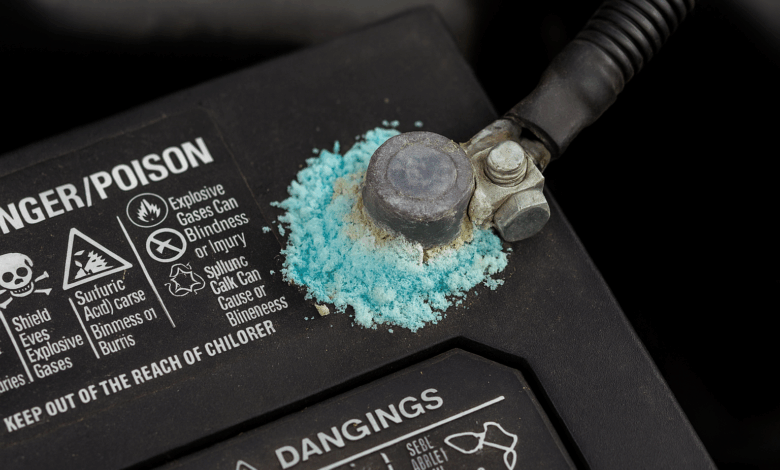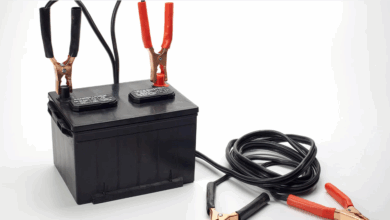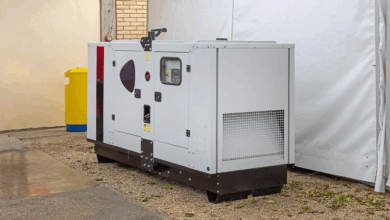How to Clean Battery Terminals – A Step-by-Step Guide to Remove Corrosion Safely

Over time, battery terminals can become dirty or corroded—whether it’s your car, bike, or household device. Corrosion can interfere with power delivery and shorten your battery’s life. In this guide, you’ll learn how to clean battery terminals safely and effectively using simple DIY methods and household materials.
Why Battery Terminal Cleaning Matters
Ever popped open your battery compartment only to find a crusty, white mess? That’s corrosion—and it’s not just unsightly. It can reduce battery performance, damage connections, and even prevent your vehicle or device from turning on.
If your bike’s been sitting in storage, or your car is acting up, it might be time to give those terminals some TLC. Cleaning them can improve electrical contact and extend the battery’s life.
Quick Method to Clean Battery Terminals
One of the easiest ways to clean battery terminals is by using baking soda and water:
- Sprinkle a teaspoon of baking soda on the terminals.
- Pour a small amount of water to activate it.
- Scrub with a brush or an old toothbrush.
- Rinse and dry thoroughly.
Sandpaper or a terminal brush can also help remove stubborn corrosion.
Table of Contents
- Materials You’ll Need
- Cleaning Car Battery Terminals
- Cleaning Household Battery Terminals
- FAQs
Materials Needed
For Car Batteries:
- Baking soda
- Petroleum jelly (or dielectric grease)
- Clean rag
- Protective gloves
- Water
- Old toothbrush
- Wrench or pliers
For Bike or Small Device Batteries:
- Lemon juice or vinegar
- Baking soda
- Cotton swabs or an old toothbrush
- Paper towel or clean rag
- Protective gloves
How to Clean Car Battery Terminals
Step 1: Inspect the Battery
Pop the hood and locate the battery—usually near the front of the engine compartment. Check for visible corrosion (white, blue, or green residue). If the battery case is cracked or leaking, replace it instead of cleaning.
Step 2: Check Cables and Clamps
Lift the plastic caps covering the terminals and inspect for buildup. If the corrosion is minor, it’s safe to clean. If it’s excessive or the cables are damaged, consider replacing them.
Step 3: Disconnect the Battery
Using a wrench, loosen the nuts on the clamps.
- Always remove the negative (–) terminal first to avoid short circuits.
- Then remove the positive (+) terminal.
If the clamps are stuck due to corrosion, use pliers gently—but never let the tool touch any metal part of the car frame.
⚠️ Safety Tip: Always wear protective gloves and eye gear. Avoid touching corroded material with bare hands.
Step 4: Make a Cleaning Paste
Mix 3–4 tablespoons of baking soda with about 1 tablespoon of distilled water until a thick paste forms.
Step 5: Apply and Scrub
Dip a toothbrush or rag into the paste and apply it to the terminals and clamps. Let it sit for 5–10 minutes. The bubbling action means it’s working.
Step 6: Scrape Off Excess Corrosion
Use a dull knife (like a butter knife) to scrape off large corrosion deposits, then brush away the rest with steel wool or a terminal cleaner.
Step 7: Rinse and Dry
Carefully rinse the terminals with clean water (avoid letting it get into battery vents) and wipe dry with a clean, oil-free rag. Do not use paper towels—they can leave behind fibers.
Step 8: Apply Petroleum Jelly
Rub a thin layer of petroleum jelly or dielectric grease on the clean terminals. This helps prevent future corrosion by creating a moisture barrier.
Step 9: Reconnect the Battery
- First, reattach and tighten the positive terminal.
- Then reconnect the negative terminal.
Replace the terminal covers securely.
How to Clean Household Battery Terminals
Step 1: Inspect for Corrosion
Remove the device’s battery cover and inspect the terminals.
- Mild corrosion = black spots
- Severe corrosion = white powder or crust
If you notice any battery leakage, discard the battery immediately. Chemicals like potassium hydroxide are hazardous.
Step 2: Make a Cleaning Solution
Mix 3 tablespoons of baking soda with 15 ml of water to make a paste.
Step 3: Clean with a Cotton Swab
Dip a cotton swab into the baking soda paste and apply it to the corroded area. Let it bubble and work its magic.
⚠️ Avoid letting water drip into the electronic device.
Step 4: Rinse with Distilled Water
Use a fresh swab dipped in distilled water to clean off the remaining paste and residue. Repeat until clean.
Step 5: Let it Dry
Allow the cradle and terminals to dry for at least 20 minutes before inserting a new battery.
Step 6: Reinstall Batteries
Place fresh batteries into the clean compartment, close the cover, and test your device—it should work like new!
FAQs – Frequently Asked Questions
Q: Can touching battery terminals shock you?
A: Usually not. A 12-volt battery won’t cause serious harm, but it’s always best to wear gloves for protection.
Q: Can I use vinegar instead of baking soda?
A: Yes. Lemon juice or white vinegar can help neutralize alkaline corrosion. It’s especially useful for household batteries.
Q: How can I prevent corrosion in the future?
A: Apply a small amount of dielectric grease or use anti-corrosion terminal washers. Products like AMSOIL’s metal protector also work well.
Q: Why use petroleum jelly on battery terminals?
A: Petroleum jelly acts as a protective barrier against moisture, helping prevent oxidation and corrosion.
Now that you know how to clean battery terminals safely, you can maintain peak performance from your car, bike, or electronic devices. A little maintenance can go a long way in extending the life of your batteries!




![How to Bypass CO Sensor on Generator – [4-Step Safety Guide]](https://www.generator411.com/wp-content/uploads/2025/08/co-sensor-on-generator-390x220.png)